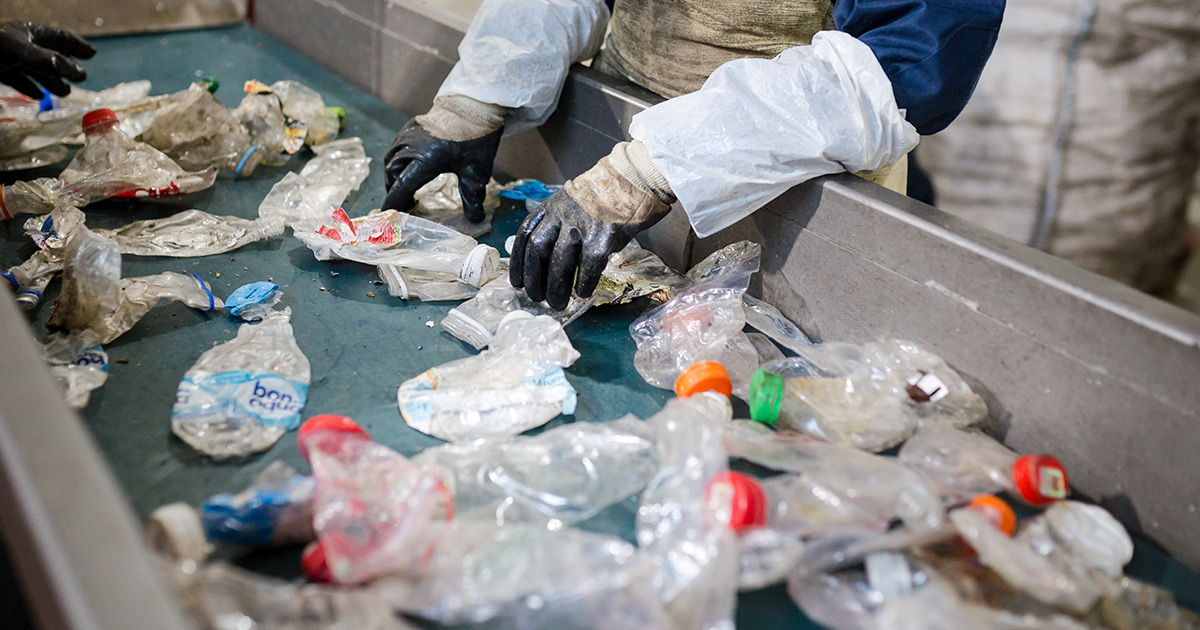The 7 Types of Plastic
Plastics have become an integral part of our daily lives, playing a crucial role in countless applications across industries. However, not all plastics are created equal. There are numerous different types of plastics, each with unique properties, uses, and environmental implications. This article will explore the most common types of plastics, their characteristics, and their impact on the environment.
Polyethylene Terephthalate (PET):
PET is widely used for packaging purposes due to its excellent clarity, strength, and barrier properties. It is commonly found in beverage bottles, food containers, microwavable containers, and polyester fibers. PET is 100% recyclable, and in a report by Waste 360, 29.2% of PET is recycled in the US. However, if not recycled, PET is not easily biodegradable and can take hundreds of years to decompose.
High-Density Polyethylene (HDPE):
HDPE is made from petroleum. It is a versatile plastic with high strength and resistance to chemicals. It is commonly used in milk jugs, shampoo bottles, detergent bottles, and pipes. HDPE can also be found in wood-plastic composites and snowboards. HDPE is considered easily recyclable and has a lower environmental impact than other plastics.
Polyvinyl Chloride (PVC):
PVC is known for its durability, versatility, and flame resistance. It is often used in building transport, electrical insulation, packaging, packaging, pipes, vinyl flooring, window frames, and medical tubing. However, PVC production involves toxic chemicals, and its disposal can lead to the release of harmful substances, including phthalates, lead, cadmium, and organotins making it a less environmentally friendly option.
Low-Density Polyethylene (LDPE):
LDPE is a flexible plastic with excellent resistance to moisture and chemicals. It is commonly used in packaging films, garbage bags, cling film, grocery bags, and squeeze bottles. While rigid LDPE is recyclable, the less rigid LDPE becomes, the more difficult it becomes to recycle. Its widespread use in single-use applications contributes to environmental pollution, as LDPE plastic can take hundreds of years to decompose.
Polypropylene (PP):
PP is a lightweight and durable plastic that can withstand high temperatures. It is commonly used in food containers, automotive parts, and textiles. Considered one of the safer plastics, PP has a lower environmental impact and is widely recycled. However, products made of PP plastic that end up in landfills, which are not properly recycled, degrade slowly, taking about 20-30 years to decompose. During this time, PP plastics release harmful toxins into the environment, including cadmium and lead, which cause environmental concerns.
Polystyrene (PS):
PS is a rigid and lightweight plastic commonly used in foam insulation for housing, takeaway food packaging, disposable cutlery, and packaging materials. However, PS is not easily recyclable and can persist in the environment for a long time. Expanded polystyrene (EPS), commonly known as Styrofoam, is particularly problematic due to its non-biodegradable nature and difficulty of recycling, with most households not able to recycle polystyrene from their home recycling. To recycle polystyrene, check with your local council for a local polystyrene or Styrofoam recycling center.
Polyethylene Terephthalate Glycol (PETG):
PETG is a transparent and tough plastic that provides significant chemical resistance, durability, and excellent formality for manufacturing and combines the properties of PET and glycol modification. It is often used in medical equipment, drinking bottles, cooking oil containers, retail displays, and 3D printing. PETG is recyclable and considered a safer alternative to PVC.
Biodegradable and Compostable Plastics:
Currently, only around 1% of plastics on the global market are considered bio-based, according to European Bioplastics. Microorganisms can break down biodegradable and compostable material into water, carbon dioxide, mineral salts, and new biomass within a defined period of time. Whether a biodegradable or compostable plastic item biodegrades and how quickly that happens strongly depends on the conditions it is exposed to during disposal. These conditions include temperature, duration, the presence of microorganisms, nutrients, oxygen, and moisture (De Wilde et al., 2013; van den Oever et al., 2017).
Biodegradable and compostable plastics are designed to break down more readily in specific environments, such as industrial composting facilities or home compost bins. These plastics, often made from plant-based materials like corn starch or polylactic acid (PLA), offer potential solutions to reduce plastic waste. However, proper disposal methods are crucial, as they may not degrade efficiently in conventional waste management systems.
Improving Recycling Rates
Plastic recycling rates are low, and with only an expected 9% of plastic annually recycled, plastic can cause excessive leakage of harmful chemicals into the environment through littering, improper waste management, and product wear and tear. Plastic can stay in nature for many years, and there is now evidence of plastics entering our food chain, having detrimental effects on humans.
Understanding the different types of plastics is essential for making informed decisions regarding their use and disposal. While plastics offer numerous benefits, it is crucial to consider their environmental impact. Recycling, reducing single-use plastics, and promoting the use of biodegradable alternatives can all contribute to a more sustainable future. As consumers and businesses, we have the power to drive positive change and reduce our reliance on plastics that harm our environment.






